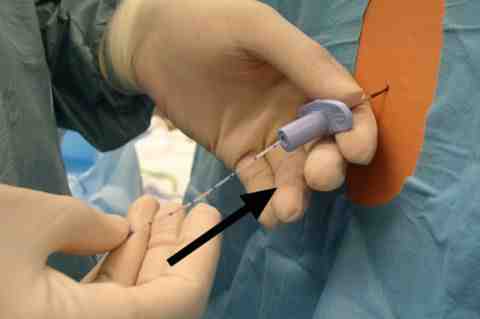There are two basic techniques. The usual prerequisites apply for both. The most common and quickest technique is needle-through-needle, with both epidural and spinal being performed at the same level. This technique is illustrated below. An alternate technique is to perform separately in sequence a spinal and an epidural, in either order, at the same or different levels, using the standard techniques for each procedure.
There are two basic techniques. The usual prerequisites apply for both. The most common and quickest technique is needle-through-needle, with both epidural and spinal being performed at the same level. This technique is illustrated below. An alternate technique is to perform separately in sequence a spinal and an epidural, in either order, at the same or different levels, using the standard techniques for each procedure.
Stage 1
The epidural space is located in the usual manner using a Tuohy needle and loss of resistance technique.
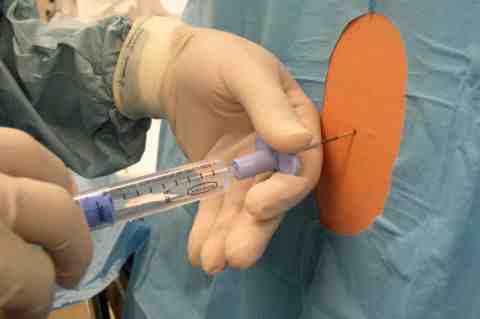
There are two basic techniques. The usual prerequisites apply for both. The most common and quickest technique is needle-through-needle, with both epidural and spinal being performed at the same level. This technique is illustrated below. An alternate technique is to perform separately in sequence a spinal and an epidural, in either order, at the same or different levels, using the standard techniques for each procedure.
Stage 2
A spinal needle (longer than the standard needle) is passed through the Tuohy needle.
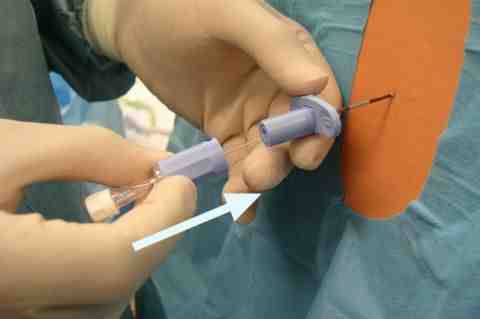
There are two basic techniques. The usual prerequisites apply for both. The most common and quickest technique is needle-through-needle, with both epidural and spinal being performed at the same level. This technique is illustrated below. An alternate technique is to perform separately in sequence a spinal and an epidural, in either order, at the same or different levels, using the standard techniques for each procedure.
Stage 3
Cerebrospinal fluid can bee seen emerging from the spinal needle hub. This variant has a special locking hub mechanism to prevent unintended movement of the spinal needle.
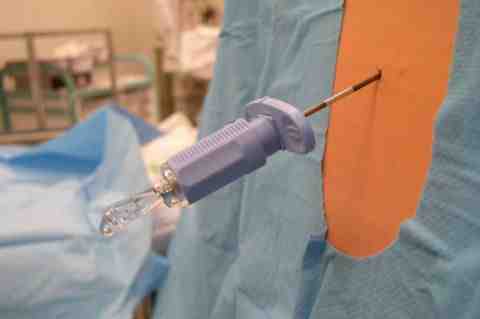
There are two basic techniques. The usual prerequisites apply for both. The most common and quickest technique is needle-through-needle, with both epidural and spinal being performed at the same level. This technique is illustrated below. An alternate technique is to perform separately in sequence a spinal and an epidural, in either order, at the same or different levels, using the standard techniques for each procedure.
Stage 4
The spinal dose is given. Note: a reduced spinal dose may be given, with the block then being augmented using the epidural component.
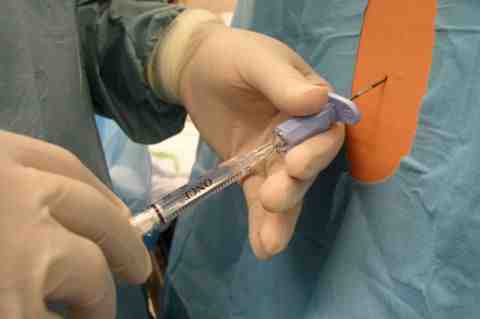
There are two basic techniques. The usual prerequisites apply for both. The most common and quickest technique is needle-through-needle, with both epidural and spinal being performed at the same level. This technique is illustrated below. An alternate technique is to perform separately in sequence a spinal and an epidural, in either order, at the same or different levels, using the standard techniques for each procedure.
Stage 5
The spinal needle is removed, leaving the Tuohy in place.
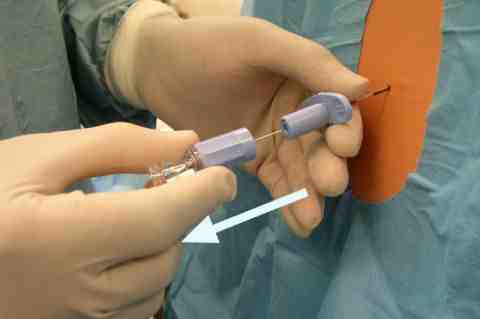
There are two basic techniques. The usual prerequisites apply for both. The most common and quickest technique is needle-through-needle, with both epidural and spinal being performed at the same level. This technique is illustrated below. An alternate technique is to perform separately in sequence a spinal and an epidural, in either order, at the same or different levels, using the standard techniques for each procedure.
Stage 6
The epidural catheter is threaded in the normal manner. The Tuohy needle is then removed, leaving the catheter in place.
